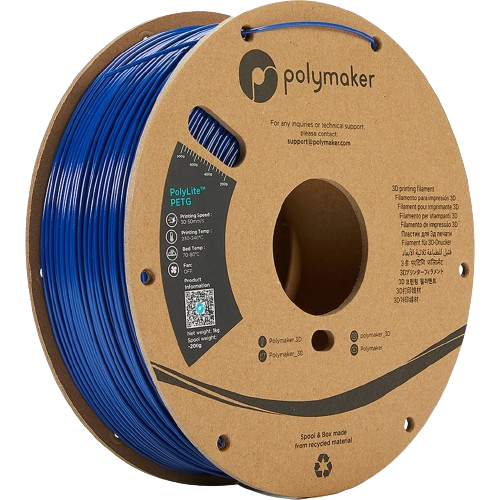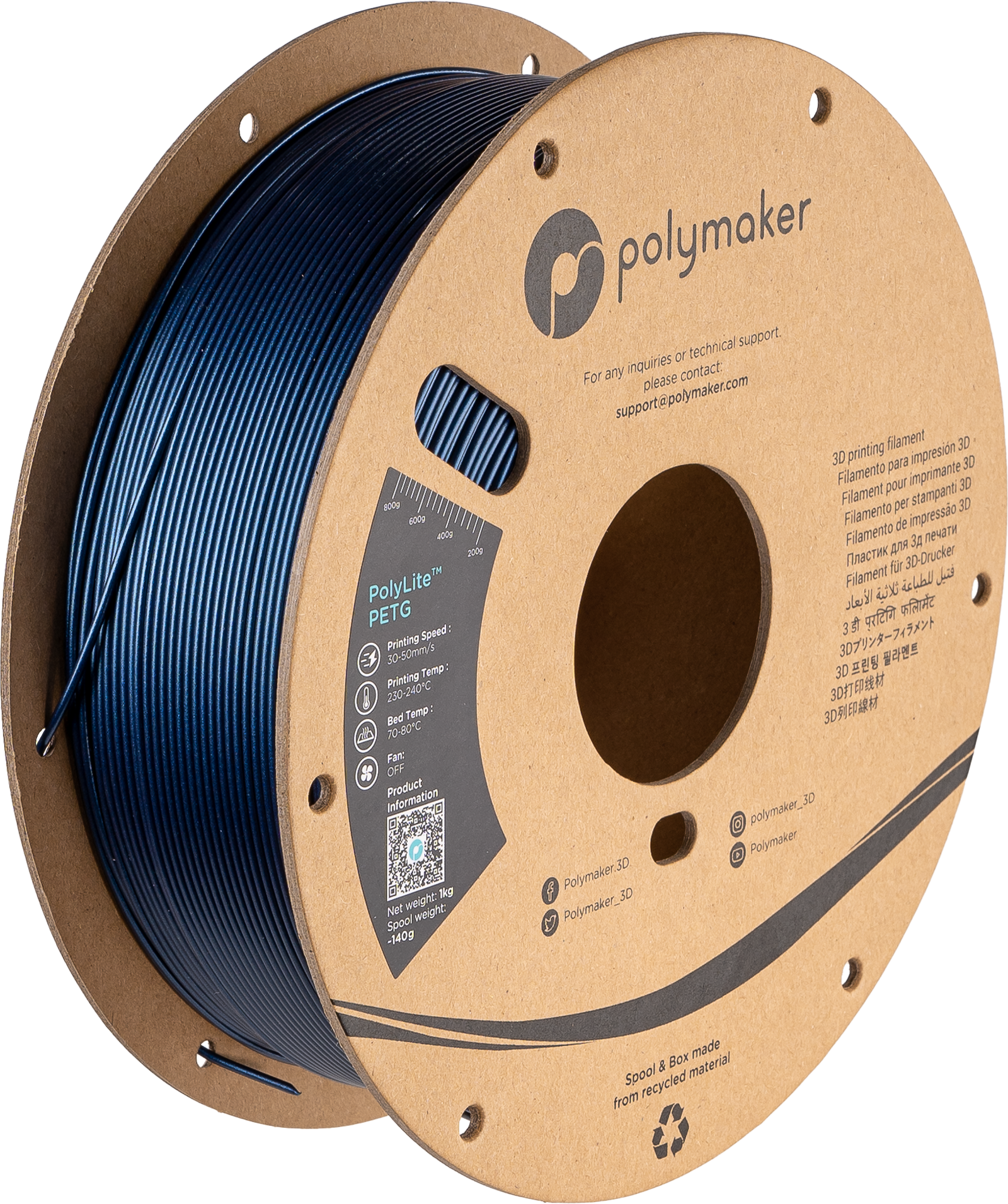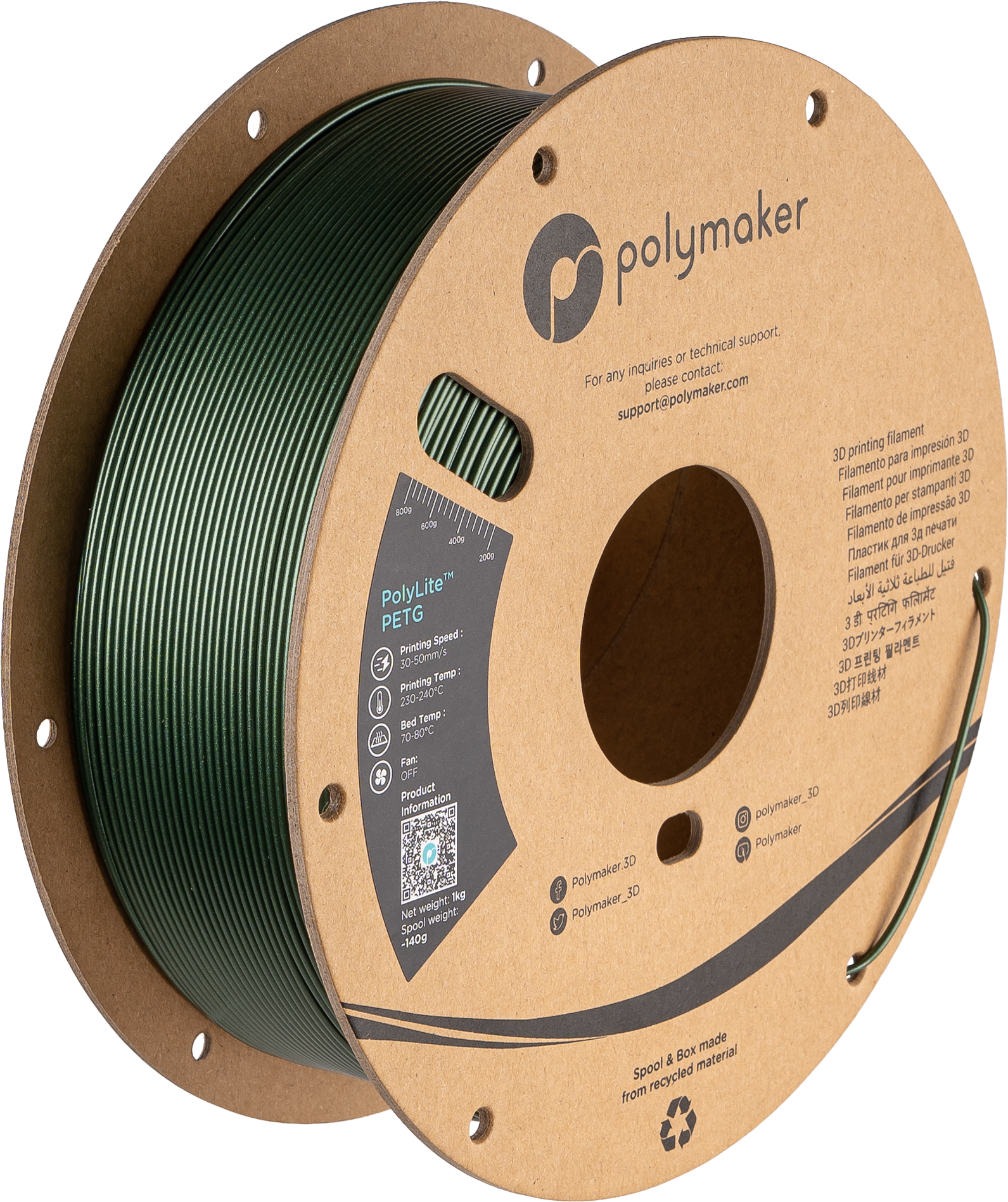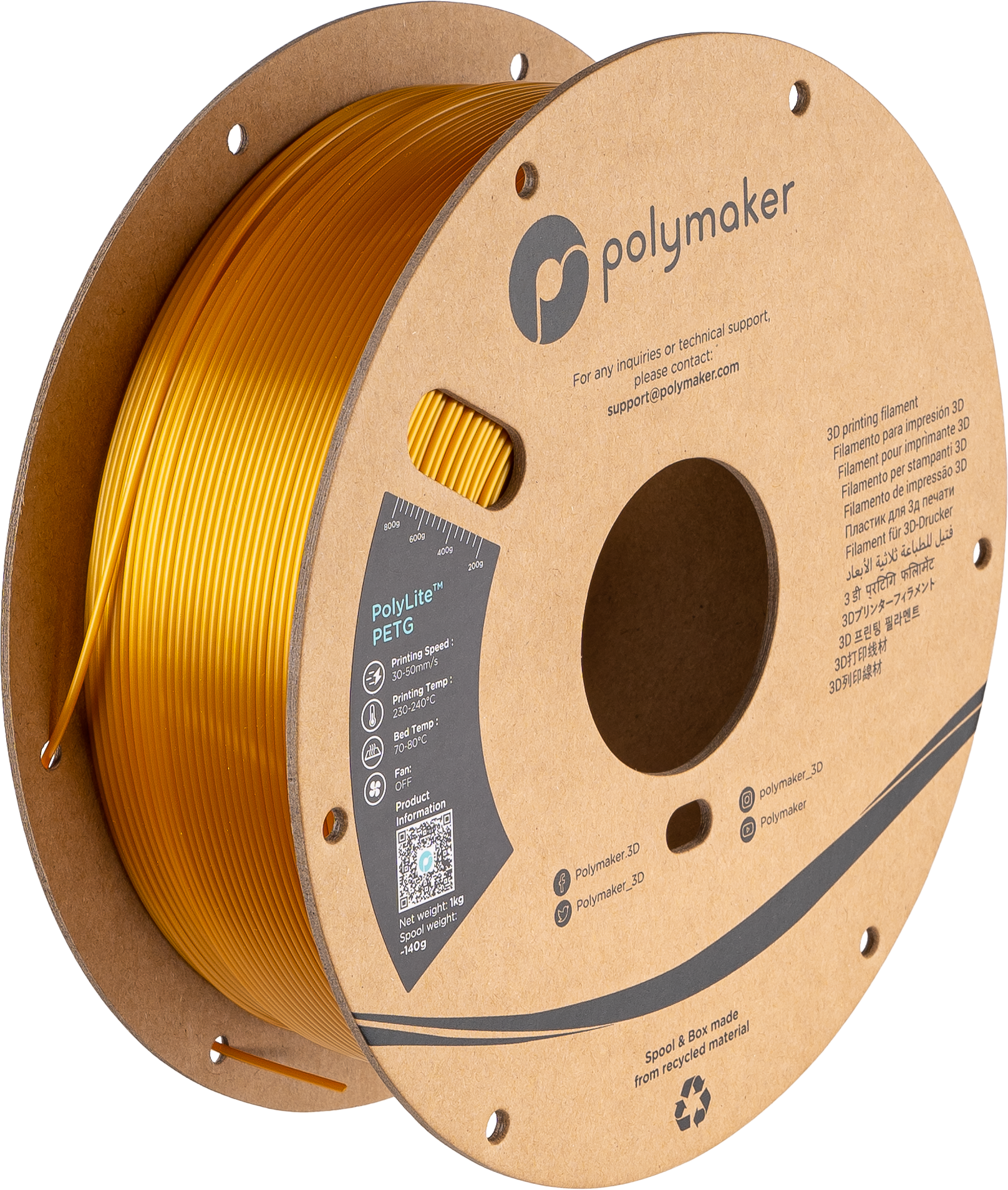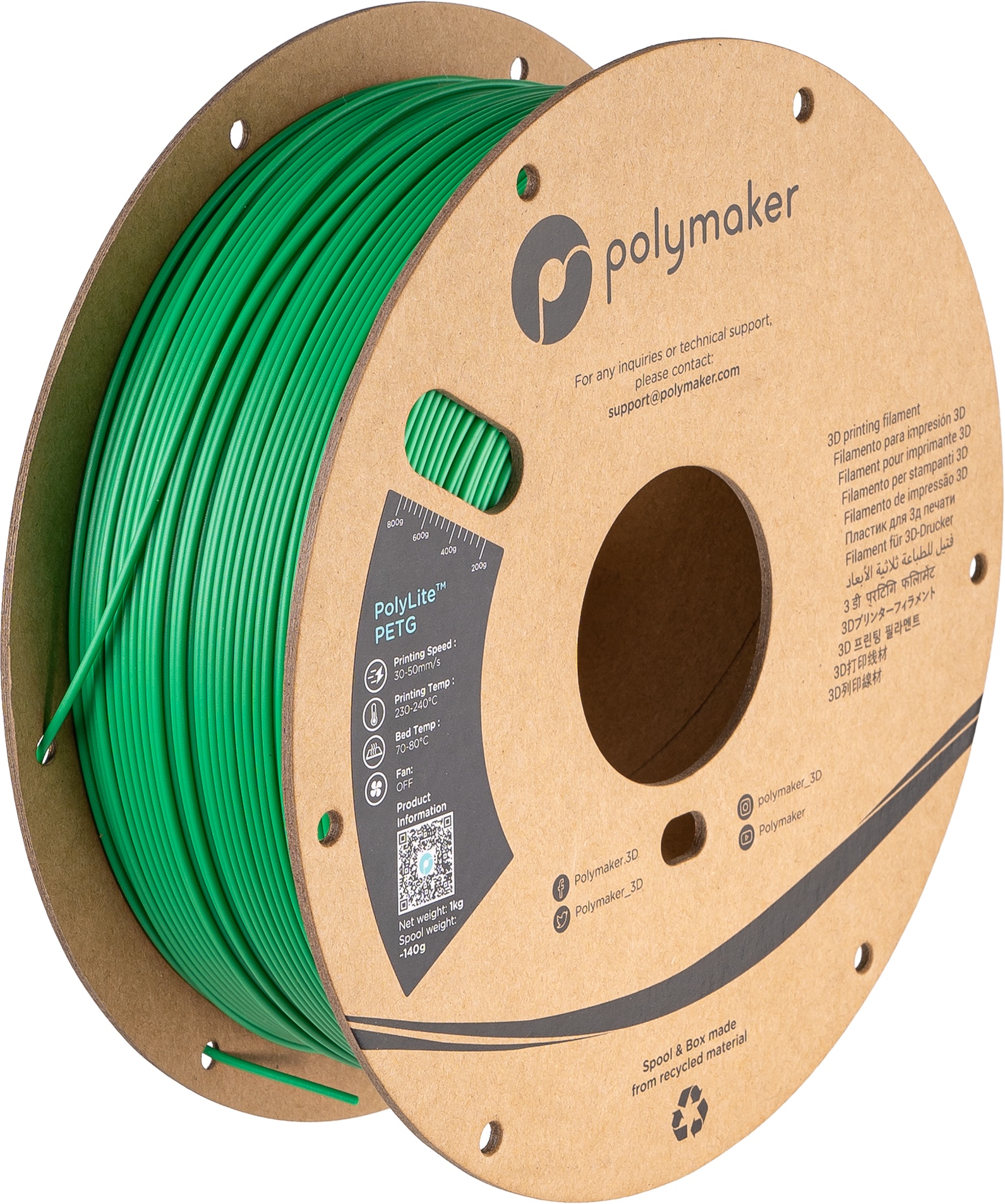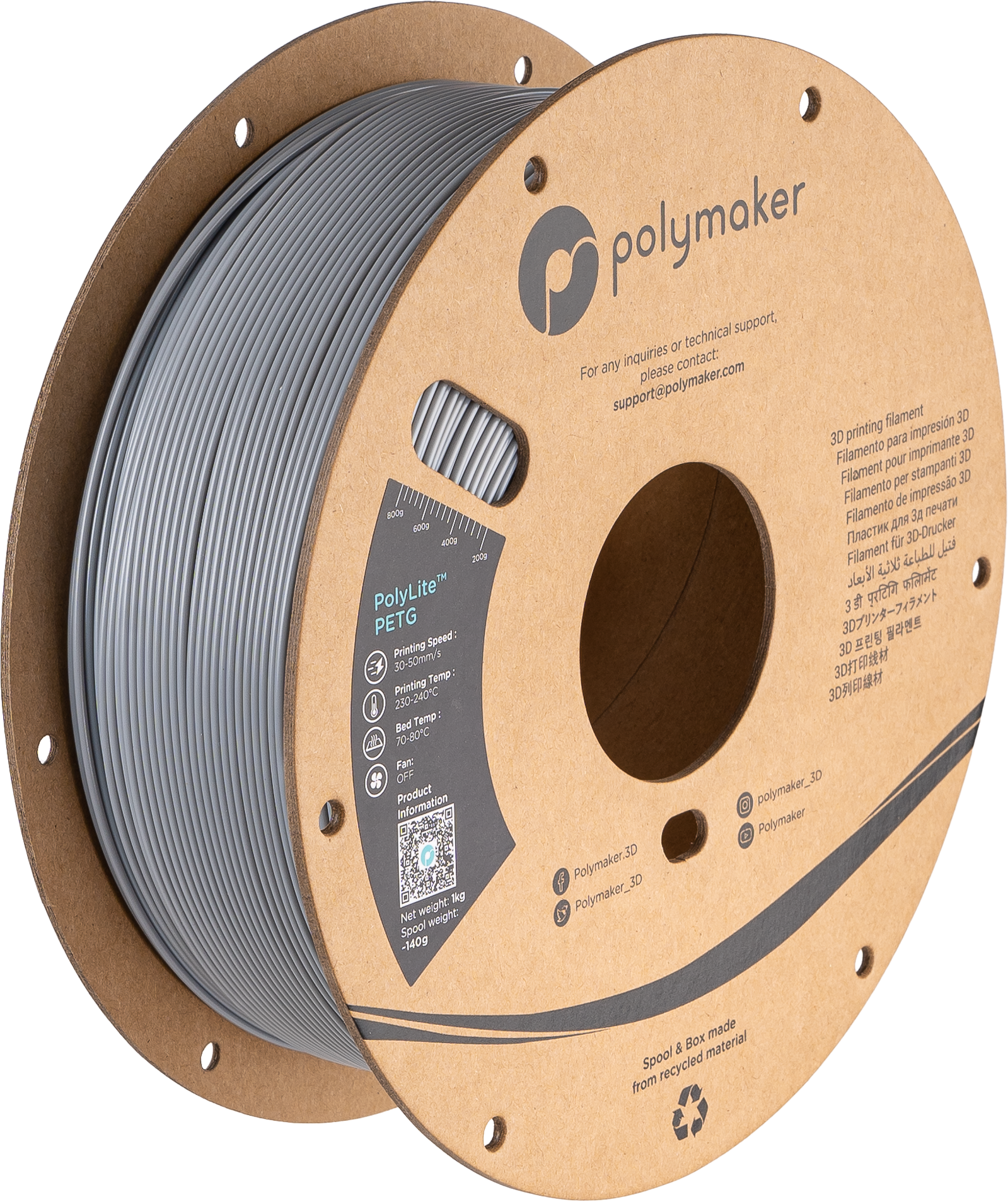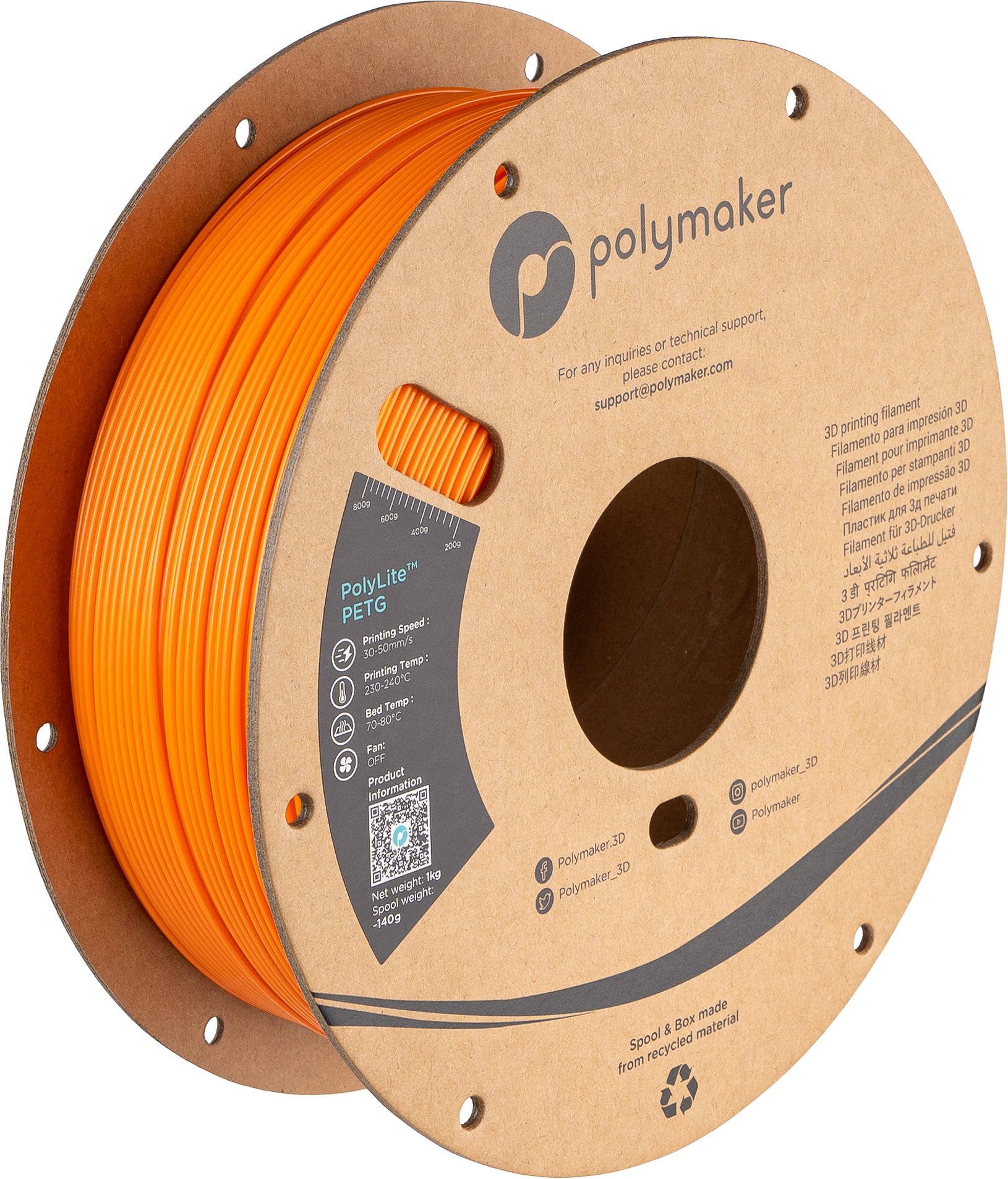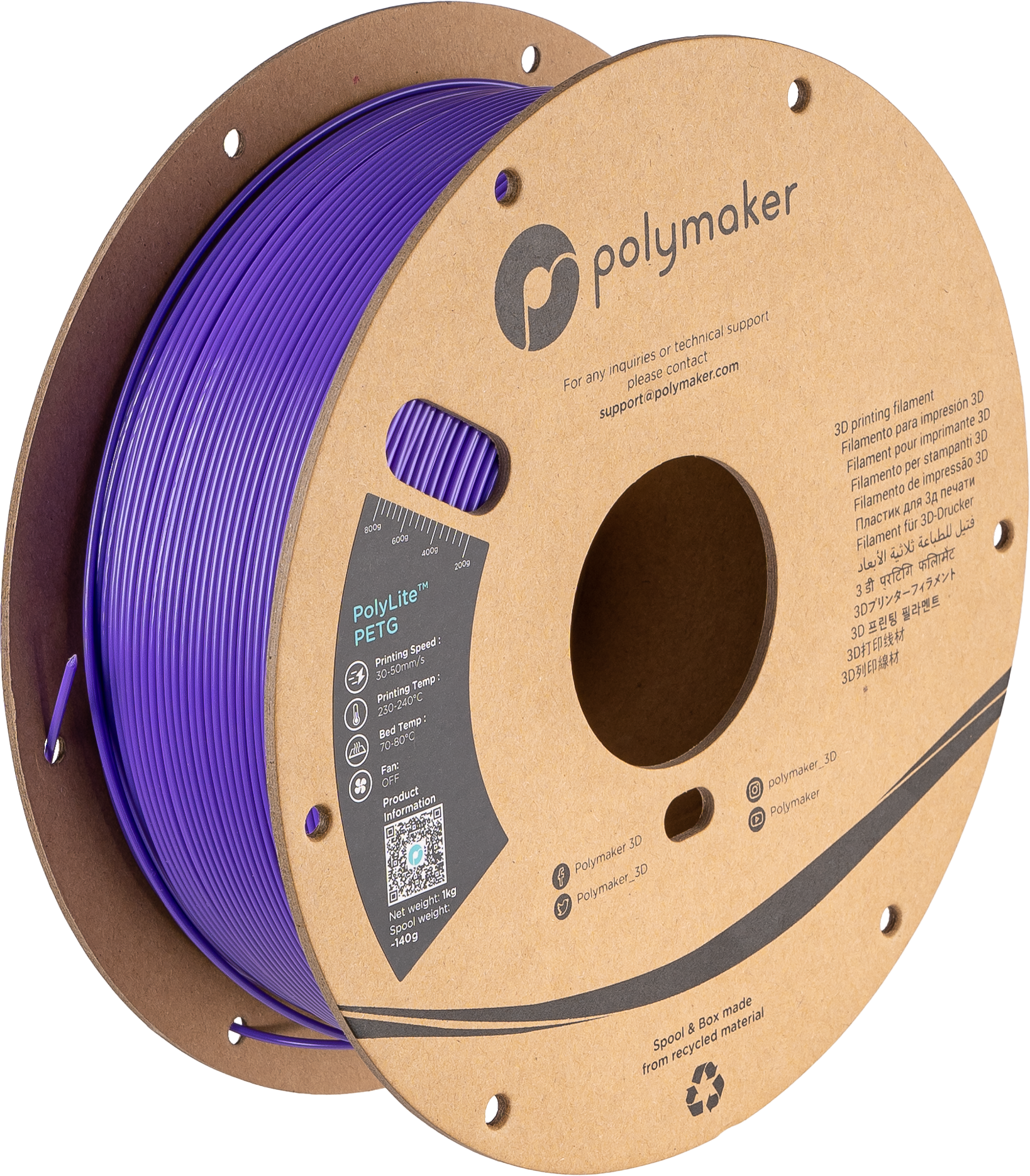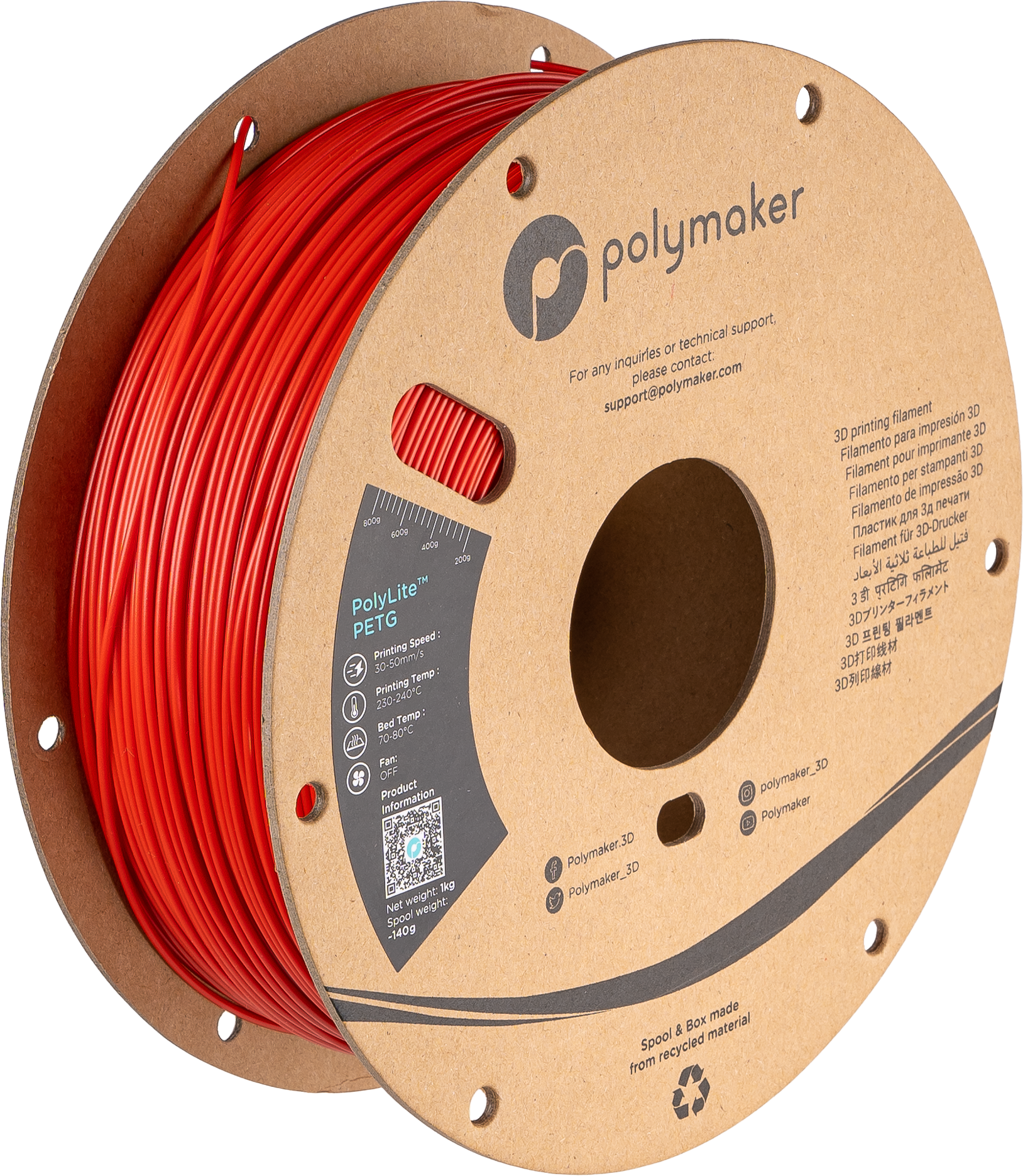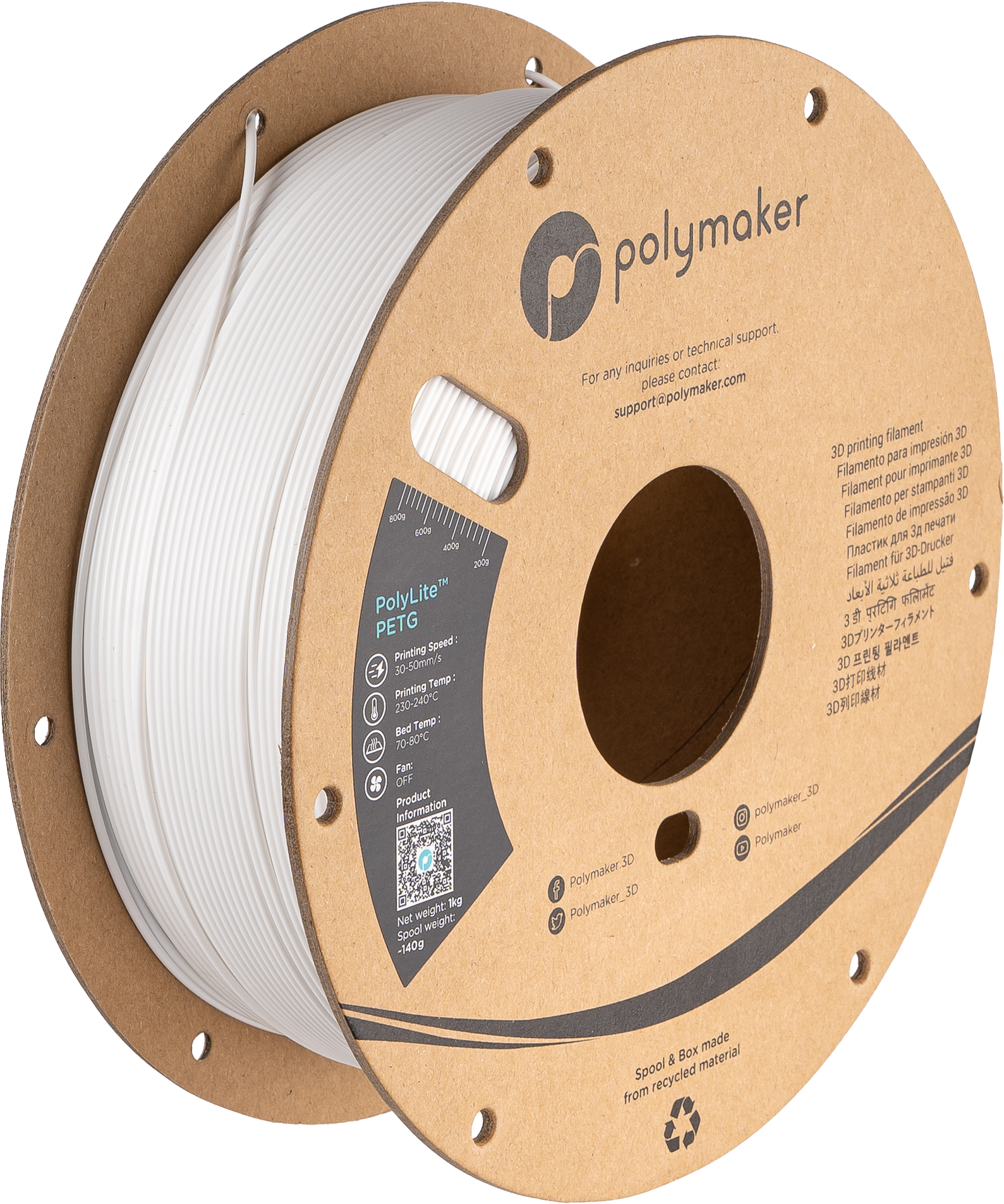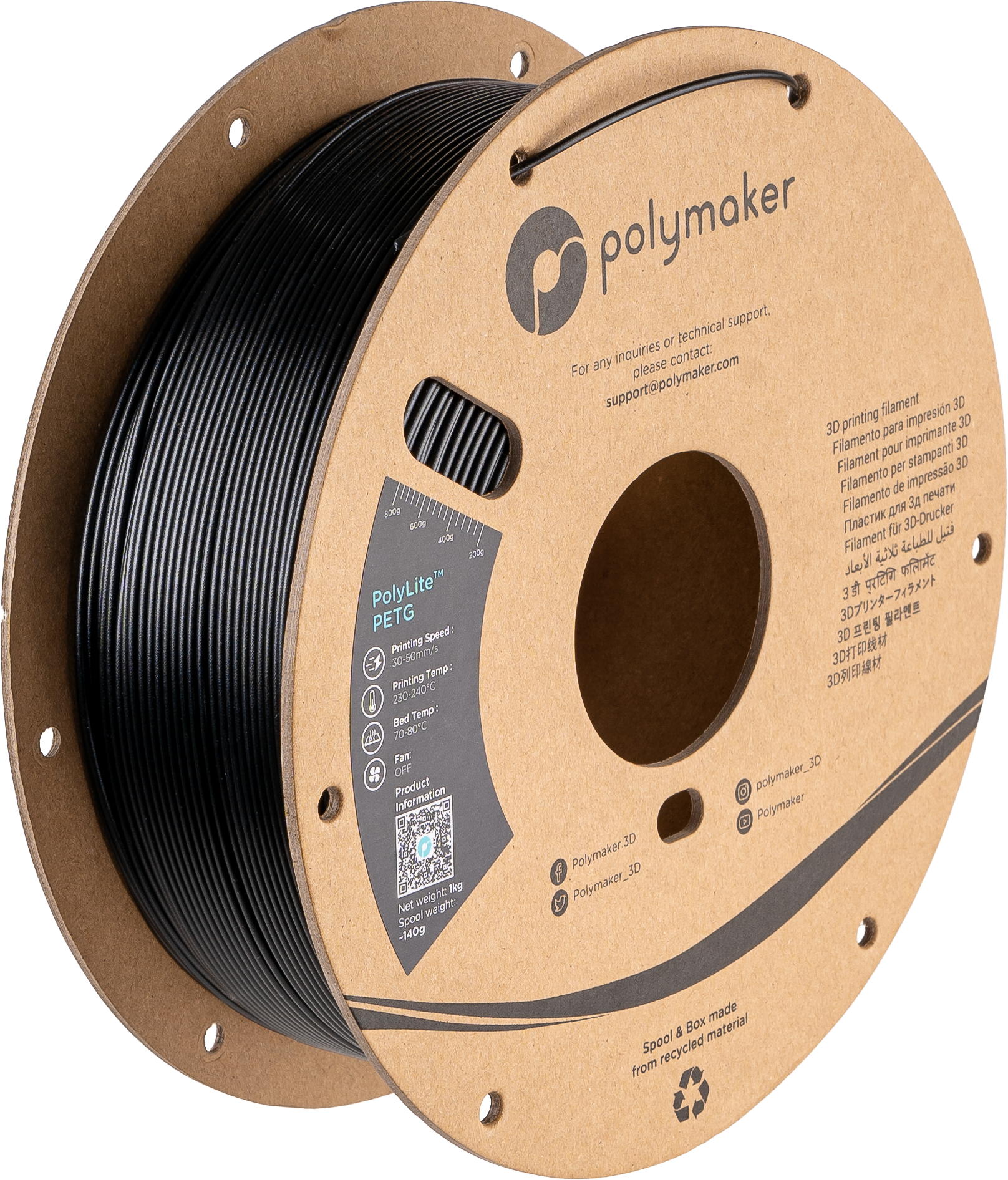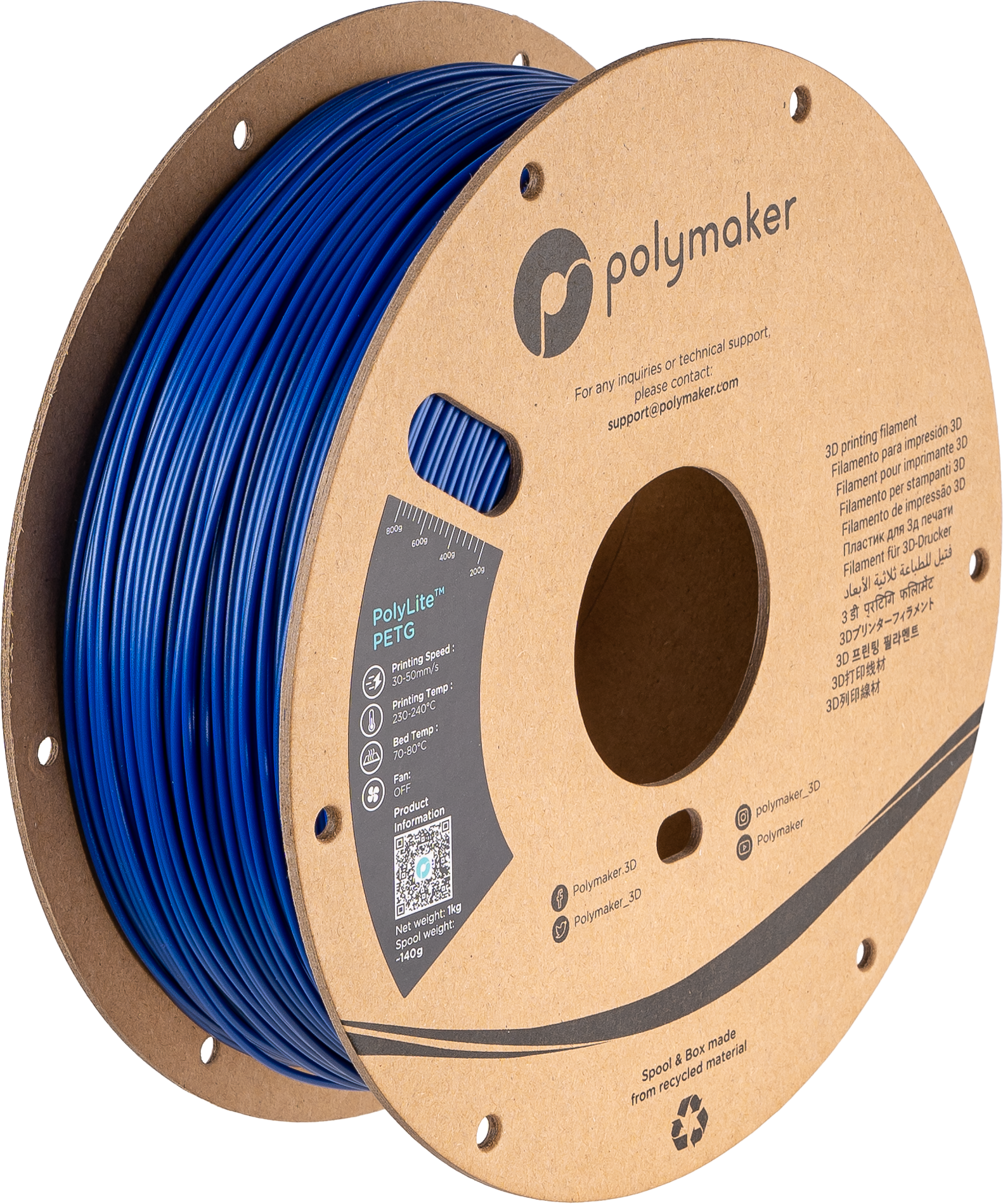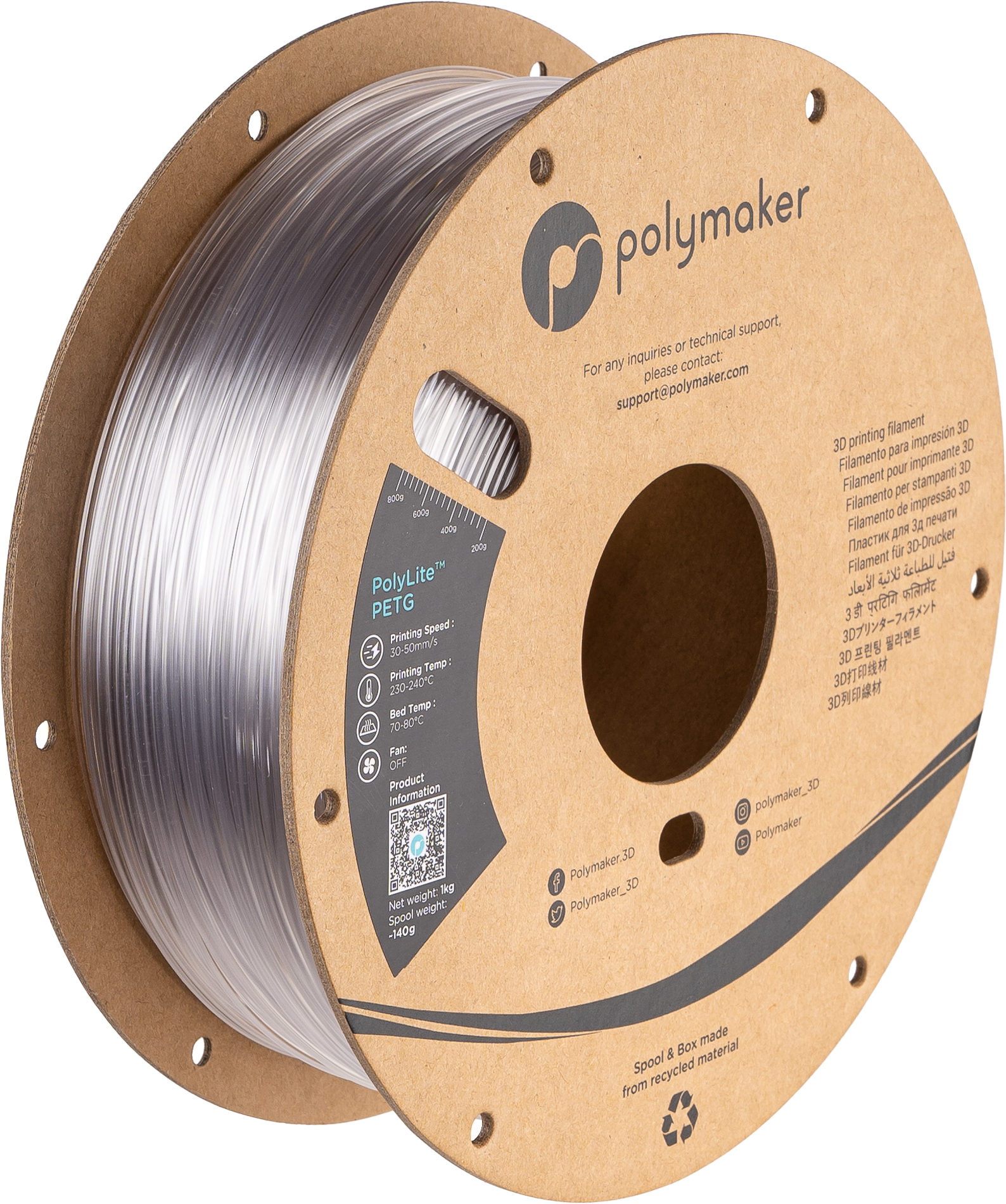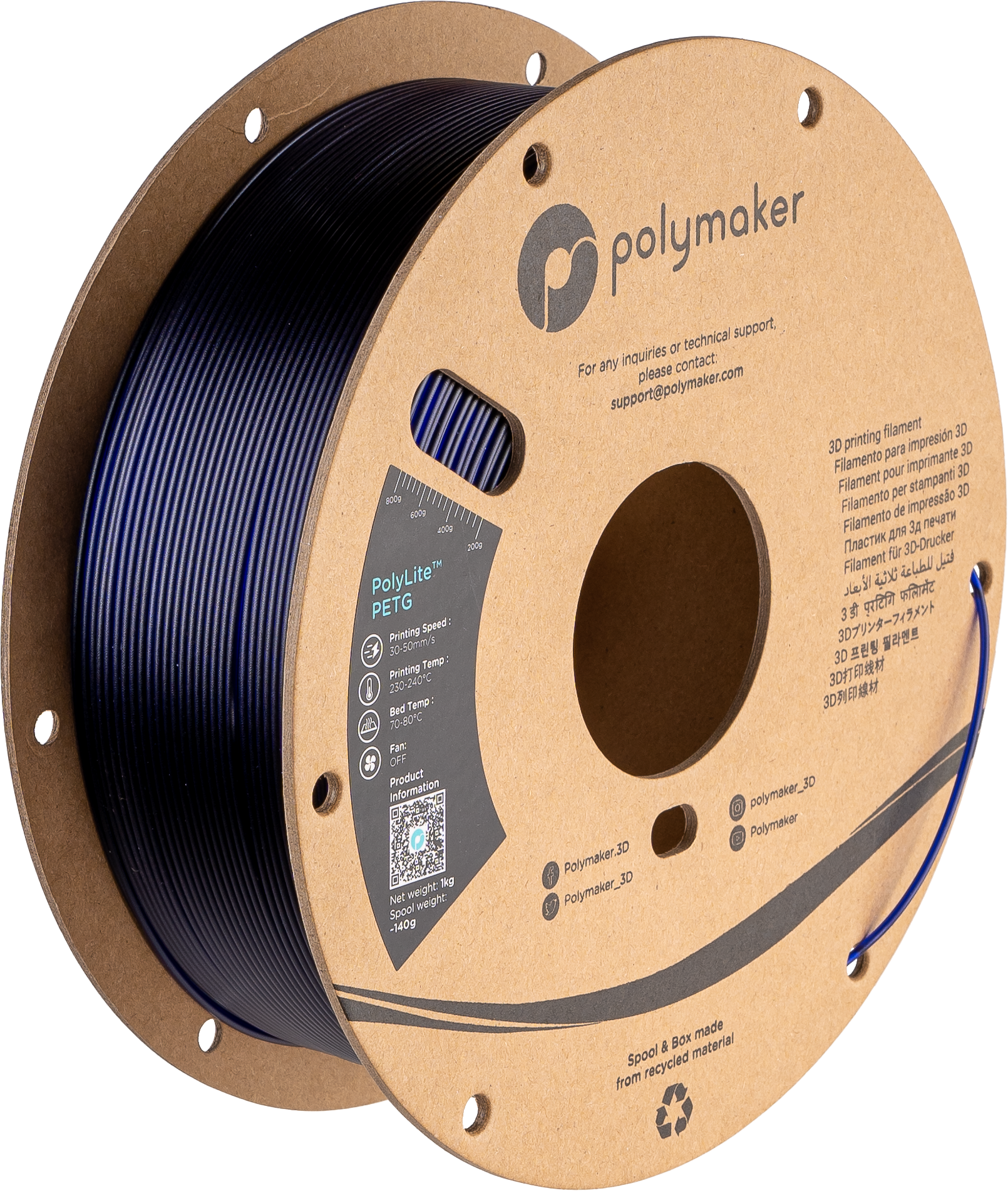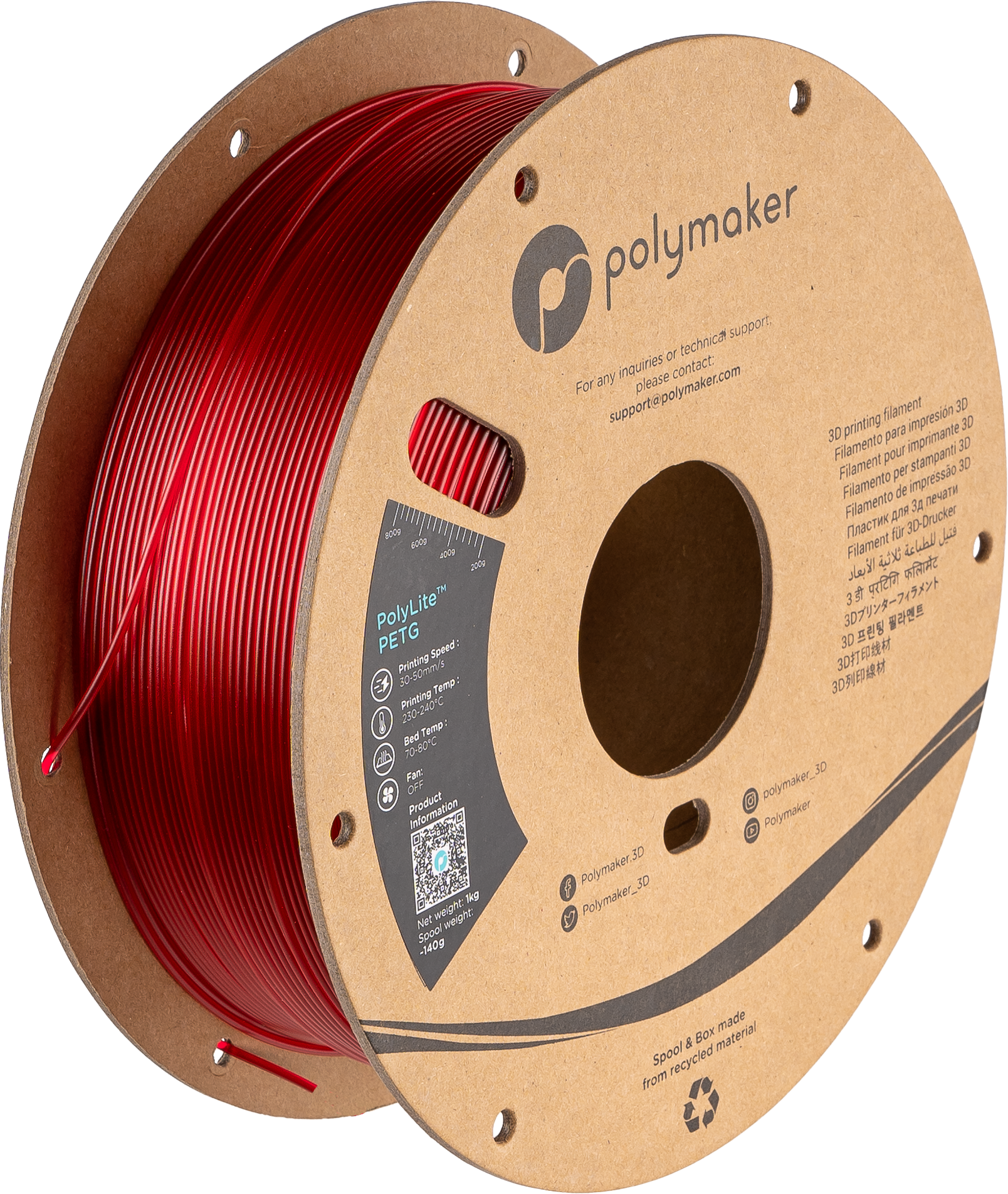Polylite PETG
PolyLite™ PETG is an affordable PETG filament with balanced mechanical properties and ease of printing. PolyLite™ PETG is just as easy to print as PolyLite™ PLA while offering an additional 20˚C heat resistance and more durability. This lends PolyLite™ PETG to more functional applications where PLA would lack the durability or heat resistance such as lighting fixtures, vibrational parts or more functional product design prototypes.
If we had a simple axis going from "low durability but easy to print" on the left to "high durability but challenging to print" on the right.
PLA would be in the far left, ABS would be in the far right and PETG would be exactly in the middle.
Printing temperature: (PLA+ABS)/2
Heat resistance: (PLA+ABS)/2
Strength: (PLA+ABS)/2
Feel free to check our TDS below for more scientific information.
What are the differences between PETG and PLA?
Composition: PETG (Polyethylene Terephthalate Glycol) is a thermoplastic polyester, while PLA (Polylactic Acid) is a biodegradable thermoplastic derived from renewable resources like cornstarch or sugarcane.
Printing Temperature: PETG generally requires a higher printing temperature than PLA. The recommended printing temperature for PETG is around 220-250°„C, while PLA is typically printed at temperatures around 190-220°„C.
Strength and Durability: PETG has higher impact resistance and flexibility compared to PLA. It is less brittle and more resistant to deformation under stress. PLA, on the other hand, is relatively rigid and can be more brittle.
Heat Resistance: PETG has better heat resistance compared to PLA. It has a higher glass transition temperature, which means it can withstand higher temperatures before deforming. PLA has a lower heat resistance and can start to soften and deform at lower temperatures.
Printability: PLA is generally easier to print with and has less tendency for warping or curling during the printing process. PETG can be more prone to issues like stringing and requires proper bed adhesion and temperature control.
Applications: PLA is commonly used for printing prototypes, hobbyist projects, and decorative items. PETG is preferred for functional parts, mechanical components, and objects that require higher durability, impact resistance, and heat resistance.
Available in 1kg package.
For any information you can contact us.


